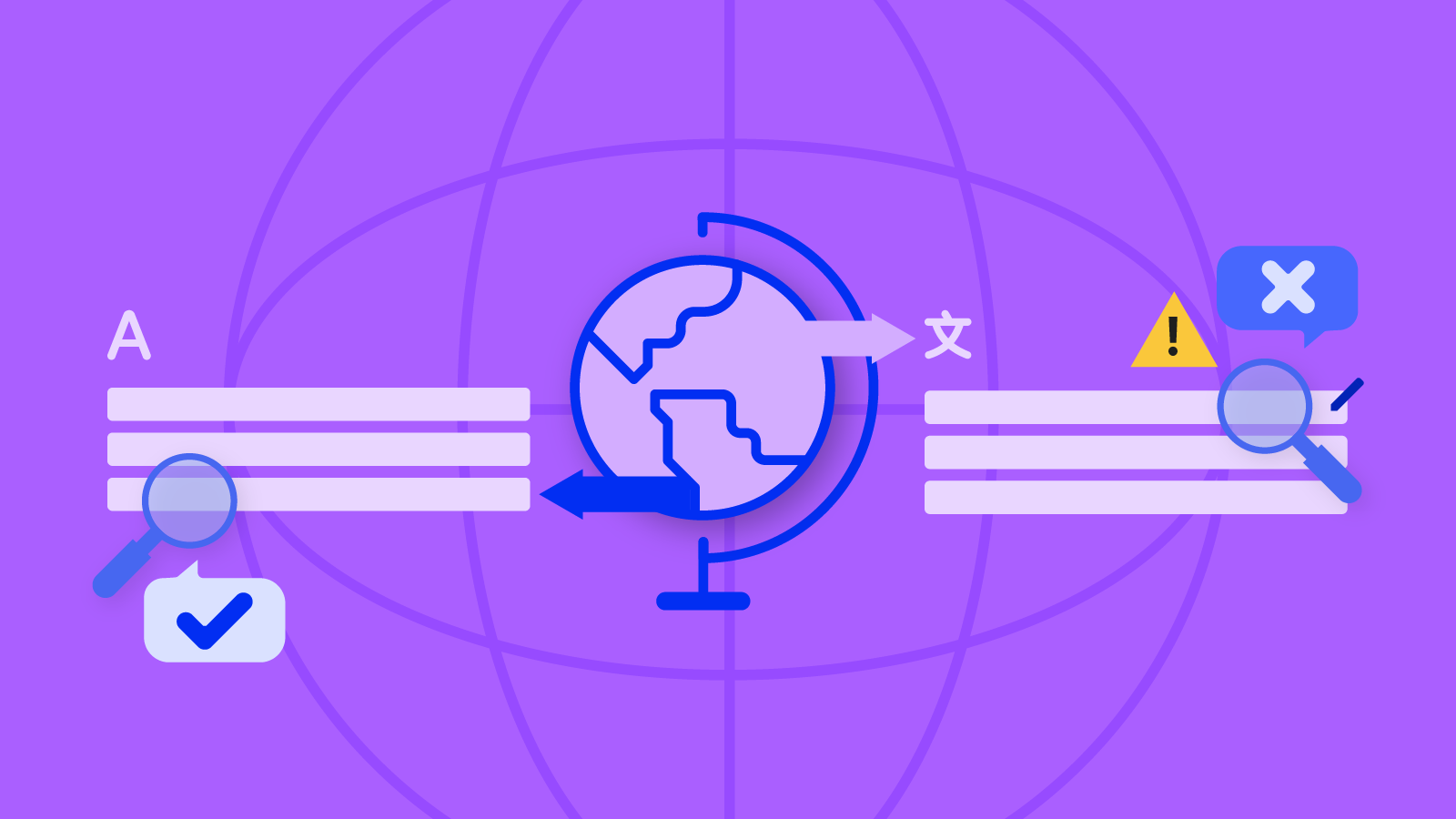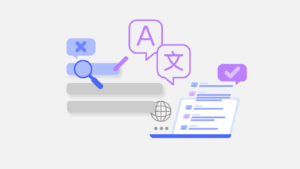Incorrect language translation can convey the wrong message, be culturally inappropriate, and sometimes downright insulting, making your well-researched content a joke or nuisance to watch or read.
Translations are not just the 1 to 1 replacement of spoken words with words in a different language. A lot of creativity and thought goes into it, as you want your non-native audience to understand your content as you intended.
Is Translation Necessary?
In a modern world where most information is shared online, more videos are reaching audiences outside your own country, culture and language.
To bridge the language barrier in content creation, translation is key. Any content can be translated; from podcasts, ads, music videos, conferences, movies, and much more.
If you rely on automatic translations like YouTube’s auto-captions, or Google Translate, chances are they are not communicating the original idea in the video.
To achieve translations that do not dilute the original meaning or intention, here are a number of mistakes that you must avoid. Have a look at the following.
Twelve Common Translation Mistakes
Poor Punctuation Marks
People with hearing impairment completely depend on captions to understand the content of a video. If wrong punctuation is used in between sentences, it gives them a different perception of what is being spoken.
The follow two sentences give entirely different meanings:
A: “You can’t come tomorrow.”
B: “You can’t come tomorrow?”
The first statement implies that the person is speaking with finality; they are informing the listener of their decision. The second is a question from person A confirming whether person B’s decision is final.
If punctuation marks are wrongly used in captions, it makes it hard for the non-native audience to follow through. One moment the audience thinks you are asking a question and they are anticipating a response.
Use of numbers
One of the most controversial parts of a numbering system in captions is the use of decimals. A number like 10.5 might appear to an audience like 10 and ½ while the same figure may be interpreted as 10 x 5 meaning 50.
In French, the word “mille” means a thousand, and “un milliard” a billion. But if you are to go with natural language processing you’d think the speaker intended to say a million in both instances.
Measuring units
It is important to include all the common measuring units applicable to an object. In some countries like the US, distance is measured in miles while other countries use kilometers. In the same way, some uses pound instead of grams in measurement. Be sure to get your measuring units right, because they can make a lot of difference!
Culture of the audience
Cultural differences have been a major barrier in translation. This is because the writer or creator of the content is speaking about ideas that a person in another country does not have first experience in.
For example, a vlog about washing machines may not find a strong audience base in 70% of African countries because most laundry is hand washed. This means that with or without translation, the subject may be of little to no interest.
Translating Rhythms and tone
In many cases, words at the end of the line of poems are meant to rhyme. There is a minimal chance that the words of a poem will be translated into a different language and still deliver the same rhythmic pattern.
Not paying attention to the tone of the writing can misguide the audience as well. For instance, the use of authoritative words such as “must” in translation can make the audience feel like it’s an immediate call to action while the content is simply meant for humor.
This is why professional translators are so sought after. They have to take into consideration meaning, context, and intent, and be able to translate and convey it in another language such that the reader is able to understand it the same way as intended.
Idioms and metaphors
Sometimes the poet may decide to use words with hidden meanings to refer to a situation. In this case, translating his speech word for word gives an entirely different meaning from the original. E.g “ a heart of stone” is used in a sentence to imply that the person is cold or not friendly. Translating this directly to a different language will lose the entire meaning to the reader.
Slangs
Slang is an informal language that is popular amongst a particular group of people only. It is not universally known and keeps evolving with trends. For example, the word dope means cool amongst Gen Zs while in actual English terms, it means a drug taken illegally.
If the translation does not take note of slang used in a conversation, the target audience will no longer relate to the content as the original version intended.
Humor/Sarcasm
In translation, you must be able to identify sarcasm or humor in a sentence in order to give an equivalent meaning in another language. For instance, the statement “bless your heart” is a common sarcastic word used in the united states as an insult. However, the same statement can also be used in a statement to show genuine sympathy.
Sentence Structure
Every language has its own structural rules. Sometimes the emphasis is on the object; other times it’s on the subject and this can be easily lost through word-for-word translation.
It is important to get a translator who is conversant with both the language in the original document and the language to which it is being translated.
Jargon
Jargon refers to the specific terminologies used in a particular niche. For instance, in the health sector, you will hear words like CPR, ER, ultrasound, etc. Another example is the business sector with words such as forex trading, investment capital, and money markets. Some of these words do not have proper translation and may be invalidated by a translator who is not an expert in the field.
Gender Specificity in Translation
There are languages that are keen on gender alignment in a statement while others are neutral. A platform like google has slowly conformed to this and sometimes gives a specific translation for such words.
For instance, the word “o bir doktor” was initially translated by google as “he is a doctor” but is currently translated as “he/she is a doctor”. If you use the first assumption that the sentence translates to “he” then the context might be lost if the narrator was referring to a female doctor.
Grammar and Pronunciation
Have you ever come across words that are spelled the same way but give different meanings with intonation? A word such as “crane” refers to a bird and construction machinery as well. The intonation and context of the sentence will bring out the difference for effective translation. E.g the crane flew past our crane at the construction site.
In pronunciation, a word such as “would” is pronounced as wood. If incorrectly captioned, then the translation will pick the latter to mean part of a plant.
How to Avoid Translation Mistakes
You want to reach a wider audience with the same content; undiluted, relevant, and specific to the culture of all your audience. There is nothing like an all-around translator. They may be multilingual but the fact that most of the languages they know are not native guarantees translation errors.
So how can you avoid translation mistakes?
Hire Professional Translators
An equipped team of translators will comprise professionals in different niches, linguistics, people with in-depth cultural experience, etc.
For instance, if your target audience is Gen Z, employ a young adult well-equipped with trendy slang, fashion, and entertainment preferences.
If you specialize in the health sector, the translator must be a professional familiar with the sector’s jargon. This will gain trust amongst your audience because they are not dealing with general content that has no specific call to action.
There are also certain language pairs that are harder to translate than others. For these languages, you will need to take extra care to hire experienced translators to make sure your content is represented accurately.
Research widely and in-depth
If you are to translate specific content to a different language, do background research on the subject. This will help you know what your target audience has already consumed and what your translated content will help improve in the niche.
It is only through research that we came to realize that some languages are gender specific while others are neutral.
Do not over-rely on machine translation
Take the example of YouTube, it can give a word that it feels matches the words spoken in the video, making the video less impactful with a lot of translation mistakes.
Machine translations are faster, but a professional translator must also go through your script to ascertain its accuracy.
Proofread your work
This goes without saying. Go through your script more than 3 times. In fact, pass down the script to 3 or 4 different professionals. The first proofreader can be conversant with the niche, the next a linguistic speaker, and lastly a native translator who understands the culture.
Reliable Translation Websites
We have talked about translation mistakes and how to avoid them but you also need to note that there is no single translator who can help you avoid these. A number of professionals partner with their counterparts to make an effective translation team.
So how do you get access to the translators? Auris AI partners with professionals to give you 100% accuracy for your translation needs. You are allowed to choose from our vast range of languages that are customized for you. Auris AI is also currently offering businesses a free trial on their first translation project. Contact us for more information!






